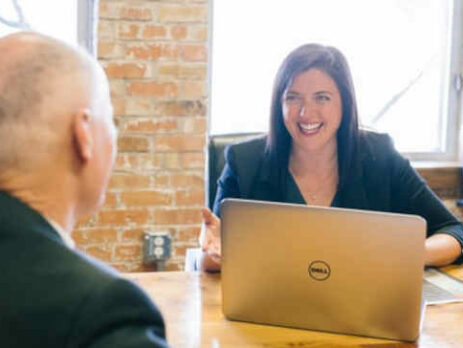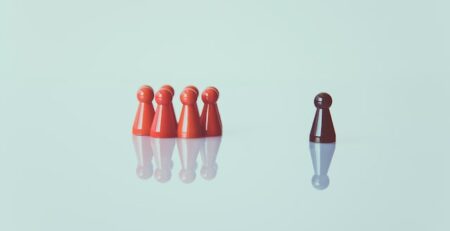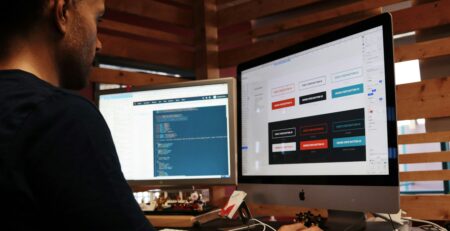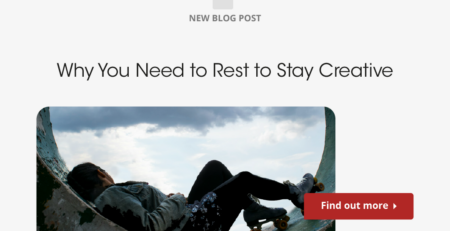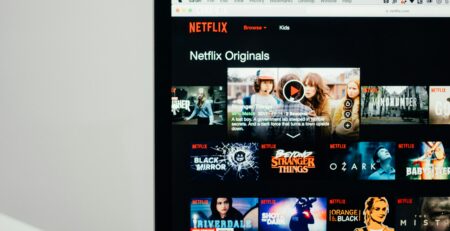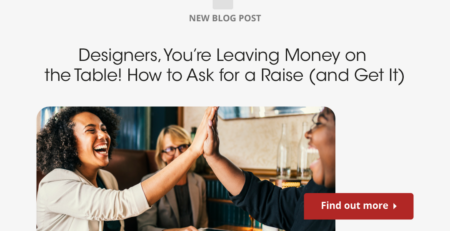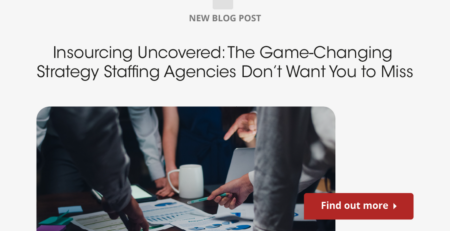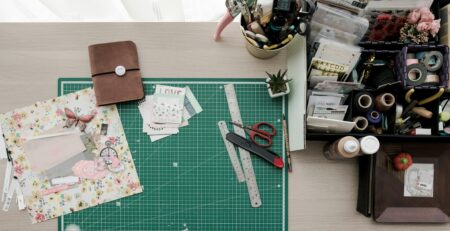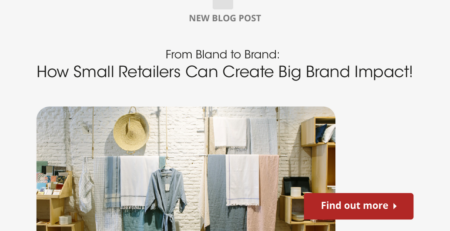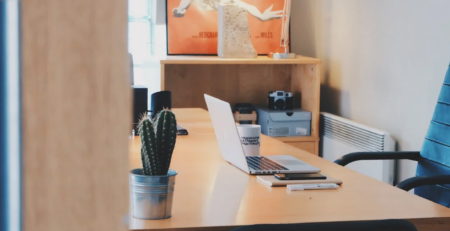Design Interview Checklist: Everything Interviewers Need to Look For in Securing Top Design Talent
Finding the best creative talent before the competition can be difficult. Too many companies have flawed standards and let superstar talent slip away. Design itself is constantly changing, so knowing what skills will be most beneficial for your business requires up-to-date knowledge of what’s happening in the industry.
At icreatives, we have our finger on the pulse of the industry and know all the latest design trends. We’ve prepared this guide to provide some insight into the most important qualifications designers can have.
Timeless Design Skills
Some things never change. While there are some qualifications whose value might wax and wane over time, there are a few key skills and aspects that are always going to be highly desirable in a design candidate.
For example, designers should be able to think outside the box. Seeing things from a different perspective will help solve problems and make the whole team and company more flexible.
You should also focus on abilities uniquely valuable for creative team members. While the accounting department might not need to center customers’ emotions, designers do. Make sure you have people who understand who buys what you sell and why.
Other employees are always going to have to understand the function and strategy of the art department or design team. Having designers who know how to communicate and do so regularly so that everyone can stay in the loop.
While technology is constantly evolving, designers should be self-motivated enough to stay on top of new trends and the latest design thinking. Self-confidence is also critical but be mindful it doesn’t turn into dogma.
Remote Interviewing for Design Candidates in 2020
Much has changed this year and one of the standout hallmarks has been the huge uptick in remote working. It’s great news for UX/UI designers because so many companies are now moving their products and services online. Digitizing was always gaining speed but it was fast-tracked in 2020.
Interviewing potential candidates via webcam or over the phone undermines some of the most valuable aspects of the interview process. It can also make applicants behave differently. Speaking into a microphone makes us all behave a bit differently. You also lose the gut feeling about a person because the atmosphere is naturally more stilted when the interview isn’t in-person.
It’s not all bad news, though. Interviews tend to take less time when they’re done with a digital intermediary. You can focus more intently on certain qualities and subject matter, which generally makes online and phone interviews feel more concentrated.

Key Characteristics of a Design Job Interview
To conduct the best design interview possible and get the information you need to make the best hiring decision, you should always ask for a few things. Here’s a short design checklist you can use to ensure you’re securing design talent that will outshine the competition.
- Case Studies
The only way you can truly understand a design candidate is to see how they think. The best way to do that is to ask for case studies, which are like work samples. Even if they don’t have tons of work experience, candidates should have some kind of case study that they’ve prepared for this specific purpose.
Case studies shouldn’t be used to show off. An ideal case study will shed some light on design candidates and how they problem-solve. Don’t fall for flashy results if the road they took to get there isn’t clear. Also, make sure to ask about teamwork and find out if there were other contributors.
- Prior Knowledge of the Product
Anyone applying for a job should demonstrate that they’ve done their homework in terms of researching your company and the particular requirements of the job they’re applying for. Designers should not only understand what their role will be but also show that they understand and, more importantly, identify with, the company’s mission.
- Curiosity
For the things they don’t know, potential new designers should exhibit a readiness to learn and adaptability to new information. Both of these qualities will make them much more flexible when they’re hired and give them the energy they need to keep producing creative and engaging work.
Design candidates will also fit in better with the rest of the company if they have at least some passing interest in the parts of the daily operations that have nothing to do with them. There’s a line where this kind of curiosity can turn into a distraction, but it’s still advantageous in small quantities.
What is a Company Atmosphere?
Every new hire is going to have some impact on how it feels to work at a company. Will they mesh with existing talent or will a divide develop? Are they going to be satisfied with the people they work with?
Every hiring manager should have the company atmosphere on their mind frequently. The majority of other employees are probably not going to consider it and hiring managers have the most direct hand at developing and sustaining a learning company culture with their hiring choices.
Small everyday decisions about the floor plan and extra-curriculars will also have some effect. Demonstrate that your company cares about diversity and the well-being of all the employees and they’ll be much happier and stick around for longer.
Flexibility in Hiring
Remote work is one of the leading factors in employee satisfaction. That’s not the only time you can use flexibility to improve the employee-company relationship, though.
UX designers have to create something called a persona based on their research and feedback from stakeholders. You should endeavor to do something similar with your imagined candidate. Don’t be too rigid in your preconceived notions or else you might make the mistake of passing up a great candidate.
Pay attention to the real people you interview and try not to compare them to the imagined applicant you have in your mind. The potential new hire will find you much more engaging and you’ll benefit from more personal and honest information.
Common Mistakes in a Design Interview
Interviews are a process that takes time to learn. Most interviewers will make at least one of these missteps at some point but knowing them should help you avoid making them in the future. Here’s a shortlist of some prominent don’ts for an effective design interview.
1- Asking for Free Work
Design tests and other mock work assignments might seem like the best way to see how design job candidates work but they can cause substantial damage to your employment brand. Some companies use these free work samples to get work done on real products and projects. That’s unethical and it will cause applicants to take the process less seriously or even abandon their application.
In addition to tarnishing the company’s image, asking for free work won’t give you a true idea of how someone works because they’ll be working under unrealistic conditions. People tend to work harder and spend more time on a design test than they will in real life. Case studies do a much better job and they make the application process much shorter.
2- Being Vague
Make sure everyone who applies for an open position knows what they’re in for. Surprises don’t tend to land well when it comes to jobs so you should take care to tell candidates exactly what to expect and what their role will be at the company.
This includes salary discussions if they arise. While it can be a sensitive issue on both sides of the interview table, wages are the prime motivating factor for the worker and a key consideration for the business so it will only help to discuss payment frankly. Other dealbreakers like remote work opportunities and benefits like health care and retirement plans should also be made clear.
3- Overdoing the Wow Factor
Even though you do want to impress candidates and entice them to work for you, over-reliance on dazzling them with perks and a fancy office can distract from the main thrust of the company and the open position.
Bear in mind that either the job or the company has already made enough of an impression to make the designer apply for the job. That’s not to say that you can rest on your laurels, but concentrate on substance over flash if you want to be securing design talent that will be worthwhile.
The Ultimate Design Checklist for Securing Design Talent
Consult this design checklist with the common design interview mistakes in mind to make sure you score the best creative talent.
1- Know the Role
Take the time to fully identify the company’s pain points and the need for the new position and you’ll not only have a much better idea of what you’re looking for but also put candidates in a better position to succeed in a mutually beneficial way.
Many companies make the mistake of leaving employees out of the role-building process. The people who will be working with the new employee know the job the best and will be impacted the most so they should also have a say in what needs doing and what kind of designer would be best suited to do it.
2- Be Friendly
Candidates who are comfortable in a design interview are more likely to give frank, honest answers to questions. Some hiring managers are too adversarial or see design interviews as a chance to try and trick the interviewee with riddles rather than speaking with the applicant as a colleague.
Of course, you should always endeavor to be professional, but that doesn’t mean you have to be stiff or curt. The atmosphere of the interview will change and you’ll get higher-quality information.
3- Study Up
If you’re a hiring manager or some other position that doesn’t require an intimate knowledge of design then you’ll probably have a hard time securing design talent unless you learn a bit about design thinking and some key terms. You don’t have to become a wizard at the Adobe Suite, but you should have a general conception of what designers do these days.
Knowledge of some key parts of the design process will help, especially some deliverables like prototypes, wireframes, and personas. These are what you’ll be looking at in the design tests and case studies submitted in the designer’s applications and what they’ll be using to communicate their ideas if they are hired.
4- Talk About Design
One of the best ways to make the atmosphere of a design interview more relaxed is to ask the applicants what they enjoy about design, what motivates them, and a few designs they can think of that are particularly effective. You can also get much better insight into the applicant and give them room to talk about something that appeals to them.
You’ll have some opportunity to talk about their submitted design materials during the interview but asking about other designs will show how the designer thinks and a bit about their personal lives without being too intrusive. Skip the Google riddles and get straight to the point by asking about design.
5- Understand the Company Culture
Of all the tips on this design checklist, none is more important than making sure candidates will mesh with the culture that already exists within the office. There are a few key elements for understanding the company culture.
- Talk with employees so you have a more objective idea about how it feels to work there. This includes taking criticism from them!
- Make a conscious and concerted effort to establish a warm and open company culture by establishing team-building exercises (but not too many) and make sure employees have access to management regularly.
- Show that your company values diversity in measurable ways that aren’t going to feel like you’re pandering. In addition to bias training and working to eradicate bias from your hiring and promotion procedures, you can do fun office activities that let employees showcase a bit of their culture.
6- You’re Being Interviewed Too
Hiring companies had the advantage some years ago but that advantage has slowly moved to the other side of the design interview table. Top design talent is hard to come by and other companies are hiring headhunters in an attempt to secure the best talent.
Although you don’t have to necessarily cater to every demand the candidate might have, remember that the company is appealing to the applicant just as much as the opposite is true. Treat the desirability of working at your company as a guarantee or a foregone conclusion and you could come across as arrogant. Some degree of humility will make the whole interview process much more comfortable for everyone.

Using a Creative Staffing Agency to Find Design Talent
If you want to streamline your hiring process, there’s nothing that will help more than working with a creative staffing agency. At icreatives, we have a long history of finding the best design talent and pairing them with top companies. Your company can save time and money by tapping into our 100% guaranteed design talent pool for your next job opening.
Even after the recent growth in remote working, icreatives hasn’t stopped looking for the best design talent around. We always keep tabs on trends in the industry and know what to look for, which means you won’t need to rely on in-house hiring managers without knowledge of design and other creative fields to make the right hiring decision.
We know what to look for in design tests and case studies and we can send the best talent your way faster in much less time than it will take to create a role, advertise it, and work your way through tons of applications.
Conclusion:
Securing design talent can be challenging, especially if you have to rely on people without personal knowledge of design to make the right hiring decision. You can use the tips in our design checklist to make sure you’re allowing skilled designers to understand what they’re applying for and shine in an interview.
Not only will this help your company get better design talent, but it will also make sure that new employees are onboarded and brought into the company culture more intuitively. Retention rates and the overall success of the whole design team will improve if you can implement these tips effectively.
If you need help securing the best design talent, reach out to icreatives and we’d be more than happy to help.

